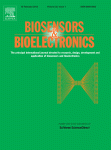科学家新开发的一种技术有望成为针对腺病毒进行无创诊断的基础。腺病毒是多种常见疾病的病因。

腺病毒模型
利兹大学研究人员开发的这种生物传感器技术不仅可以对是否存在这种病毒进行检测,而且还可以对病毒株进行鉴定并确定病毒粒子的数量。
该研究成果发表在2月15号的Biosensors & Bioelectronics杂志上。
目前,病毒检测非常复杂、费时,且需要专业人员制备样品进行病毒DNA鉴定。而这种的新的技术则更为快捷、简单且耗费低。对于病人来说,使用这种诊断方法意味着得到更及时的治疗。
“这是在病毒检测上的一个显著跨越,”指导这项研究的生命科学学院的Paul Millner教授说。“这是我们首次可以对整个病毒进行检测,而想之前只对病毒的遗传物质进行检测,也是首次使用芯片实验室技术装置对病毒颗粒进行计数。这些都是令人激动的发展。”
腺病毒是脊椎动物中一种常见的病毒,会导致从普通感冒到肠胃炎等多种疾病。免疫系统良好的人不会受到此类病毒的感染,但是对于那些免疫系统受损或不成熟的人来说,比如小孩或HIV患者,这种病毒会导致致命后果。
该技术在电子感应器上连接抗体。通过检测感应器的电变化,研究人员可以确定病毒颗粒的数目,并基于其反应而确定病毒的类型。
“在该技术可以进入到医生的诊疗室前还有一段很长的路要走,不过我们已经证实了这样一个想法,”参与该研究的博士研究生Rebecca Caygill说。“我们现在需要提高检测的灵敏性,并对处理的不同阶段进行优化,这样我们才可考虑扩大到临床实验。”

 Novel impedimetric immunosensor for the detection and quantitation of Adenovirus using reduced antibody fragments immobilized onto a conducting copolymer surface
Novel impedimetric immunosensor for the detection and quantitation of Adenovirus using reduced antibody fragments immobilized onto a conducting copolymer surface
Rebecca L. Caygilla, Christopher S. Hodgesb, Joanne L. Holmesc, Séamus P.J. Higsonc, G. Eric Blaird, Paul A. Millner
The number of Adenovirus (Ad) infections detected in immunocompromised people has increased due to the number of patients receiving transplants, as well as the HIV pandemic. Ads cause life-threatening diseases specific to the infected organs of immunocompromised hosts, with discontinuation of immunosuppressive agents necessary to prevent morbidity. The methodology in this paper has been employed to develop a novel impedimetric based assay platform to detect and quantify human Ads, which is comparable in performance to current methods, such as ELISA and PCR, but is also less expensive and faster.
Novel immunosensors have been fabricated using polyclonal antibodies raised against a human Ad (Ad5) capsid protein, which were selectively cleaved into antibody fragments by 2-mercaptoethylamine. The fragments were immobilized onto a functionalized conducting copolymer matrix comprising polyaniline and 2-aminobenzylamine. Fully fabricated sensors were incubated with two immunologically distinct serotypes of Ad, Ad5 and Ad3, with between 10 and 1012 virus particles/mL prior to sensor interrogation. Electrochemical impedance spectroscopy was used to measure the charge transfer resistance of the sensors over a range of frequencies from 25 kHz to 0.1 Hz. Our data demonstrate that the immunosensors specifically detect, and differentiate between, closely related human Ad serotypes with a limit of detection of 103 virus particles/mL. In addition, atomic force microscopy was applied to study the sensor surface nanostructure. Future work looks to test virus containing clinical samples but this could be a viable and valuable alternative for point-of-care virus detection and quantification.
文献链接:https://www.sciencedirect.com/science/article/pii/S0956566311007858







